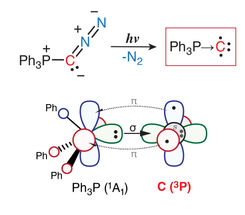New nanomaterial maintains conductivity in three dimensions
An international team of scientists has developed what may be the first one-step process for making seamless carbon-based nanomaterials that possess superior thermal, electrical and mechanical properties in three dimensions.
In early testing, a three-dimensional (3D) fiber-like supercapacitor made with the uninterrupted fibers of carbon nanotubes and graphene matched or bettered the reported record-high capacities for this type of device.
Used as a counter electrode in a dye-sensitized solar cell, the material enabled the cell to convert power with up to 6.8 percent efficiency and more than doubled the performance of an identical cell that instead used an expensive platinum wire counter electrode.
Carbon nanotubes could be highly conductive along the 1D nanotube length and two-dimensional graphene sheets in the 2Dplane. But the materials fall short in a three-dimensional world due to the poor interlayer conductivity, as do two-step processes melding nanotubes and graphene into three dimensions.
"Two-step processes our lab and others developed earlier lack a seamless interface and, therefore, lack the conductance sought," said Liming Dai, the Kent Hale Smith Professor of Macromolecular Science and Engineering at Case Western Reserve University and a leader of the research.
"In our one-step process, the interface is made with carbon-to-carbon bonding so it looks as if it's one single graphene sheet," Dai said. "That makes it an excellent thermal and electrical conductor in all planes."
Dai has worked for nearly four years with Zhong Lin Wang, the Hightower Chair in Materials Science and Engineering, and Yong Ding, a senior research scientist, at Georgia Institute of Technology; and Zhenhai Xia, professor of materials science and engineering, at the University of North Texas; Ajit Roy, principal materials research engineer in the Materials and Manufacturing Directorate, Air Force Research Laboratory, Dayton; and others on a U.S. Department of Defense-Multidisciplinary University Research Initiative (MURI) program.
To make the 3-D material, the researchers etched radially aligned nanoholes along the length and circumference of a tiny aluminum wire, then used chemical vapor deposition to cover the surface with graphene using no metal catalyst that could remain in the structure.
"Radially-aligned nanotubes grow in the holes. The graphene that sheathes the wire and nanotube arrays are covalently bonded, forming pure carbon-to-carbon nodal junctions that minimize thermal and electrical resistance," Wang said.
The architecture yields a huge surface area, adding to the transport properties, the researchers say. Using the Brunauer, Emmett and Teller theory, they calculate the surface area of this architecture to be nearly 527 square meters per gram of material.
Testing showed the material makes an ideal electrode for highly efficient energy storage. Capacitance by area reached as high as 89.4 millifarads per square centimeter and by length, up to 23.9 millifarads per centimeter in the fiber-like supercapacitor.
The properties can be customized. With the one-step process, the material can be made very long, or into a tube with a wider or narrower diameter, and the density of nanotubes can be varied to produce materials with differing properties for different needs.





















































